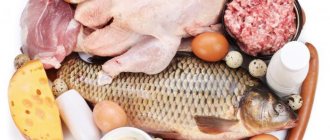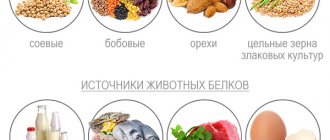What types of fiber are there?
There are two main types of fiber in nature: soluble and insoluble. Both of these types have great advantages. Soluble fiber slows down the rate of digestion, which reduces the rate at which glucose enters the bloodstream, thereby helping control blood sugar levels. It also absorbs water from the intestinal cavity, helping prevent diarrhea.
Meanwhile, insoluble fiber helps prevent constipation. Research shows a link between a diet high in soluble fiber, found in foods such as oatmeal, nuts and legumes, and a reduced risk of breast cancer. People who regularly consumed large amounts of fiber had an 8% lower risk of developing breast cancer than those who consumed low amounts.
Combination rules
Fiber-rich foods (the list also includes nuts and seeds) should be properly combined with other dishes. This will improve the absorption of fiber and prevent indigestion, constipation, and diarrhea. Remember that fiber is complex carbohydrates. That is why it is not recommended to combine it with proteins.
This rule is due to the difference in time required to digest proteins and carbohydrates. For example, whole milk, fatty and dietary meat are mainly represented by proteins, which, when combined with complex carbohydrates, are poorly absorbed in the body. In addition, fiber itself passes more slowly through the digestive tract, which impairs food processing.
That is why you should not combine foods rich in plant fibers with large amounts of protein foods. For example, professional athletes never add fiber to protein shakes because they need to get the maximum benefit from the drink, which will be significantly reduced when combined with fiber.
You should also not combine foods with fiber and fatty fish. This will slow down the absorption of plant fibers, especially insoluble ones. Experts recommend taking pure fiber or foods with high fiber content separately. But you can combine the intake with cereals, smoothies or plant-based milk.
Nutritionists insist on adding probiotics in the form of natural starters, yogurts, or special powders. Fiber is a prebiotic, that is, food for bacteria, and combining it with a probiotic will improve absorption and prevent intestinal upset.
With the right combination of foods, you can get the maximum benefit from them and avoid many digestive problems.
It is important to remember that a violation of the intestinal microflora occurs in most cases with insufficient consumption of natural probiotics and with an increased dose of plant coarse fiber. Fibers have an aggressive effect on the intestinal mucosa and lead to an uncontrolled increase in the number of harmful bacteria.
Plant-based foods rich in fiber are considered one of the most important elements of the diet of adults and children. The list is quite long, so everyone can choose a source of valuable soluble and insoluble fiber for themselves.
How much fiber does our body need?
According to dietary guidelines, adequate fiber intake is 25 grams per day [Official Source] for women and 38 grams for men.
Increasing your fiber intake throughout the day is not difficult. It's not only easy, but also delicious (just worth the avocado toast and a glass of fresh raspberries, mmm). Let's figure out which 9 foods you can add to your diet to completely improve your body's health. Go!
How to supplement your diet with dietary fiber
- Introduce fresh vegetables and fruits into your diet more often, eat them raw.
- Start your morning with a bowl of whole grain cereal that is rich in dietary fiber (one serving contains 5 to 7 or more grams of healthy fiber).
- Add both fresh and dried berries and fruits to the porridge. By doing this, you will not only improve the taste of your food, but also get an additional 2 to 5 grams of healthy fiber in your diet. Take only whole grain cereals for cooking.
- Instead of regular white bread made from refined premium flour, opt for bread made from wholemeal flour.
- When drinking juices, give preference to juices with pulp, as they contain a lot of soft dietary fiber.
Product #1: green peas
Green peas boast an impressive amount of fiber—about 4 grams per 1/2 cup, which is 14% of your daily value.
Adding a few handfuls of frozen peas is an easy way to add fiber to your pasta and rice dishes. You can also puree peas to make sauces and spreads on toast or crackers.
In addition to fiber, peas contain vitamin A, which has a beneficial effect on skin and eye health, as well as vitamin K, which helps maintain bone strength.
Advantages and disadvantages
| pros | Minuses |
|
|
Product #2: artichokes
By adding artichoke sauce to your favorite main dishes, you will not replenish your body with much fiber. It's another matter if you eat a whole vegetable. Half an artichoke (the edible part at the base of the petals) contains 3 grams of fiber, which is 11% of the recommended daily value.
Try steaming artichokes with a little olive oil, garlic and rosemary, or stuffing them with feta and sun-dried tomatoes and baking them in the oven. It is very tasty, healthy and (an undeniable plus for women) low in calories!
In addition to fiber, artichokes are high-potassium vegetables.
Foods with maximum fiber
An adult should eat 25–30 g of dietary fiber per day, and a child should eat 20–25 g. Due to a high-calorie diet, an athlete needs even more - 40 g. Below we will look at which foods contain the most fiber.
Bran and grains
The leader in the amount of fiber is considered to be bran (wheat, rye, oat). 100 g of this product contains 45 g of dietary fiber - almost 2 daily requirements!
Bran should be consumed with a glass of water 20–30 minutes before the main meal. This will help reduce your appetite.
Many fibers can also be found in cereals:
- quinoa – 7 g;
- oatmeal (not cereal) – 8 g;
- buckwheat – 11 g;
- bulgur – 12 g;
- pearl barley – 15 g.
If you don't like cereal, try sandwiches made with whole grain bread. It is much healthier and tastier than a loaf.
Legumes, nuts and seeds
Such food is rich not only in fiber, but also in other useful substances: proteins, B vitamins, magnesium, iron, calcium.
Here is a list of foods with the maximum amount of fiber:
- soy – 13 g;
- beans – 12 g;
- lentils – 11 g;
- chickpeas – 10 g;
- peanuts – 8 g;
- chia seeds – 34 g;
- flax seeds – 27 g;
- pumpkin seeds – 6 g;
- pistachios – 10 g;
- almonds – 7 g;
- hazelnuts – 6 g.
However, you should be careful with seeds and nuts. Due to their high fat content, they can overload the digestive tract and lead to weight gain.
Vegetables rich in fiber
In general, fiber makes up only 2–5% of the weight of vegetables. But due to their low calorie content, such products can be consumed in large quantities. The exception is potatoes.
Table 1. Vegetables rich in fiber
| Vegetable | Number of fibers per 100 g of product |
| Green pea | 10 g |
| Broccoli | 2.5 g |
| Turnip | 2 g |
| White cabbage | 2 g |
| Leafy vegetables: lettuce, spinach, arugula | 1–1.5 g |
Fruits and berries rich in fiber
Such food charges the body not only with fiber, but with vitamins.
Table 2. Sweet fruits rich in fiber
| Fetus | Number of fibers per 100 g of product |
| Raspberries | 3.5 g |
| Gooseberry | 3.5 g |
| Blackberry | 3 g |
| Strawberry | 2.5 g |
| Pears | 2.8 g |
| Oranges | 2.2 g |
| Apricots, peaches | 2 g |
| Apples | 1.8 g |
Product #3: avocado
Avocado lovers, rejoice! There's a good reason to order avocado toast from your favorite cozy place: Half an avocado contains about 5 grams of fiber, which is 18% of your daily value! The monounsaturated fats that make up the fruit are as beneficial for the cardiovascular system as the fats found in olive oil.
There are many options for avocado dishes, from soups, salads, guacamole and toast to smoothies. Avocado is a nutrient-rich, versatile fruit that can be eaten raw.
Interesting fact:
As it turned out, in Russian this fruit was called differently for a long time. Want to know how? Go to our Telegram channel and find the answer to your question.
Fully or partially limited products
A fiber diet involves the complete exclusion from the diet of baked goods, sausages, animal and poultry meat, fatty fish, white rice, waffles, pasta, sugar, sweets (chocolate, cakes, cookies, jam, pastries, jam, candies, honey ).
Exclude cheeses, semolina, pickles, canned and smoked foods, fast food, dumplings, dumplings. It is not allowed to consume animal and cooking fats, as well as products based on them.
Canned fish, sauces, seasonings, spices, alcohol-containing and carbonated drinks, packaged juices, coffee are completely excluded.
Table of prohibited products
| Proteins, g | Fats, g | Carbohydrates, g | Calories, kcal | |
Berries | ||||
| grape | 0,6 | 0,2 | 16,8 | 65 |
Nuts and dried fruits | ||||
| nuts | 15,0 | 40,0 | 20,0 | 500 |
Snacks | ||||
| potato chips | 5,5 | 30,0 | 53,0 | 520 |
Cereals and porridges | ||||
| white boiled rice | 2,2 | 0,5 | 24,9 | 116 |
Flour and pasta | ||||
| pasta | 10,4 | 1,1 | 69,7 | 337 |
| vareniki | 7,6 | 2,3 | 18,7 | 155 |
| pancakes | 6,3 | 7,3 | 51,4 | 294 |
| dumplings | 11,9 | 12,4 | 29,0 | 275 |
Bakery products | ||||
| bagels | 16,0 | 1,0 | 70,0 | 336 |
| buns | 7,2 | 6,2 | 51,0 | 317 |
| buns | 7,9 | 9,4 | 55,5 | 339 |
| white bread crackers | 11,2 | 1,4 | 72,2 | 331 |
| wheat bread | 8,1 | 1,0 | 48,8 | 242 |
Confectionery | ||||
| jam | 0,3 | 0,2 | 63,0 | 263 |
| jam | 0,3 | 0,1 | 56,0 | 238 |
| candies | 4,3 | 19,8 | 67,5 | 453 |
| cookie | 7,5 | 11,8 | 74,9 | 417 |
Ice cream | ||||
| ice cream | 3,7 | 6,9 | 22,1 | 189 |
Cakes | ||||
| cake | 4,4 | 23,4 | 45,2 | 407 |
Chocolate | ||||
| chocolate | 5,4 | 35,3 | 56,5 | 544 |
Raw materials and seasonings | ||||
| mayonnaise | 2,4 | 67,0 | 3,9 | 627 |
| honey | 0,8 | 0,0 | 81,5 | 329 |
| sugar | 0,0 | 0,0 | 99,7 | 398 |
| tomato sauce | 1,7 | 7,8 | 4,5 | 80 |
| vinegar | 0,0 | 0,0 | 5,0 | 20 |
Dairy | ||||
| milk | 3,2 | 3,6 | 4,8 | 64 |
| cream 35% (fat) | 2,5 | 35,0 | 3,0 | 337 |
| sour cream 18% | 2,5 | 18,0 | 3,6 | 184 |
Cheeses and cottage cheese | ||||
| cheese | 24,1 | 29,5 | 0,3 | 363 |
| cottage cheese 18% (fat) | 14,0 | 18,0 | 2,8 | 232 |
Meat products | ||||
| fatty pork | 11,4 | 49,3 | 0,0 | 489 |
| salo | 2,4 | 89,0 | 0,0 | 797 |
| beef liver | 17,4 | 3,1 | 0,0 | 98 |
| bacon | 23,0 | 45,0 | 0,0 | 500 |
| ham | 22,6 | 20,9 | 0,0 | 279 |
Sausages | ||||
| boiled sausage | 13,7 | 22,8 | 0,0 | 260 |
| smoked sausage | 28,2 | 27,5 | 0,0 | 360 |
| pork sausages | 11,8 | 30,8 | 0,0 | 324 |
Bird | ||||
| smoked chicken | 27,5 | 8,2 | 0,0 | 184 |
| duck | 16,5 | 61,2 | 0,0 | 346 |
| goose | 16,1 | 33,3 | 0,0 | 364 |
Eggs | ||||
| hard-boiled chicken eggs | 12,9 | 11,6 | 0,8 | 160 |
Fish and seafood | ||||
| boiled fish | 17,3 | 5,0 | 0,0 | 116 |
| salted fish | 19,2 | 2,0 | 0,0 | 190 |
| salmon | 19,8 | 6,3 | 0,0 | 142 |
| canned fish | 17,5 | 2,0 | 0,0 | 88 |
| semi-finished fish products | 12,5 | 6,7 | 14,7 | 209 |
| sardine | 20,6 | 9,6 | — | 169 |
| salmon | 21,6 | 6,0 | — | 140 |
| tuna | 23,0 | 1,0 | — | 101 |
| trout | 19,2 | 2,1 | — | 97 |
| hake | 16,6 | 2,2 | 0,0 | 86 |
Oils and fats | ||||
| butter | 0,5 | 82,5 | 0,8 | 748 |
| animal fat | 0,0 | 99,7 | 0,0 | 897 |
Alcoholic drinks | ||||
| vodka | 0,0 | 0,0 | 0,1 | 235 |
| beer | 0,3 | 0,0 | 4,6 | 42 |
Non-alcoholic drinks | ||||
| cola | 0,0 | 0,0 | 10,4 | 42 |
| coffee | 0,2 | 0,0 | 0,3 | 2 |
| black tea | 20,0 | 5,1 | 6,9 | 152 |
| * data is per 100 g of product | ||||
Product #4: edamame
Instead of eating another bag of unhealthy chips, why not try edamame? Edamame is a pod of soybeans that is a tasty snack that is rich in fiber (contains about 5 grams per 1/2 cup, which is 18% of the Daily Value). They combine proteins, fiber and healthy fats.
There is another significant benefit of eating edamame: People who regularly eat foods with isoflavones, such as edamame or tofu, have a lower risk of developing various types of heart disease.
Edamame, like freshly picked green peas, can be eaten straight from the pod, cooked as a Thai appetizer, or added to your favorite salads.
Fiber-rich foods as an alternative to the regular menu
To get as much fiber as possible per day, you need to replace ordinary foods with those rich in fiber. If you change a simple bun to a bran bun, you get a product enriched with fiber. At 40 gr. bran contains 8.5 g of fiber. You can also replace simple noodle soup with borscht and beans. Beans have almost 6 grams of fiber. The benefits of eating foods rich in fiber have long been proven by nutritionists. For example, if a person includes orange juice in his breakfast every day, he will receive not only his daily dose of vitamin C, but also fiber.
Fiber is found in foods such as:
- in bananas (1 pc.) - 4g,
- in carrots (1 pc.) - 2g,
- in an apple (1 pc.) - 3g,
- in strawberries (100 g) - 4 g,
- in broccoli (100 g) - 4 g,
- in muesli (50 g) - approximately 5 g,
- potatoes (1 pc.), boiled in skins - 3g,
- dried dates (3 pcs.) - 7g.
If the packaging says that the product is made from whole grains, it means it is enriched with fiber. Fiber is stored in raw vegetables and fruits. If you boil them, they will lose half of this useful ingredient. You should try to eat unprocessed vegetables and fruits as often as possible, then you won’t need to take artificial vitamins.
Why eat fiber-rich foods? This complex compound is very beneficial for the human body. Here are some interesting facts:
- Fiber can enhance intestinal peristalsis, that is, it can be used to cleanse the intestines of harmful toxins.
- Eating fiber is beneficial for people suffering from constipation.
- You can lose weight with foods rich in fiber because it makes you feel full.
- Fiber makes the intestines act more actively, so fats will not be retained in the body.
- If you eat whole grain cereal for breakfast, it will have a positive effect on your mood.
People who regularly consume foods with fiber are less stressed. If you regularly eat vegetables and fruits rich in fiber, your brain function will improve. Adding fiber-rich vegetables and fruits to your standard diet will diversify your diet. In addition to fiber, many foods contain many additional nutrients. For example, if you eat blueberries daily, you can improve your vision and memory. Blueberries are an ideal substitute for another dessert, and the benefits will be much greater.
Many doctors recommend eating oatmeal for breakfast for good reason, because it is very rich in fiber; in addition, this product is enriched with succinic acid and proteins. Fiber is also found in cabbage, which almost everyone includes in their diet. If you eat cabbage on at least one day of the week, this will become an effective prevention of such a terrible disease as stomach cancer.
In addition to its advantages, fiber also has some disadvantages:
- Eating too much fiber can cause gas.
- Bran also contains fiber, but it can create a barrier in the body to absorb vitamins and minerals. If a person takes multivitamins, then he should exclude bran from his diet.
- Fiber-rich foods can be high in calories. For example, avocado, dried apricots or nuts. Dried apricots in compote can be replaced with dried apples.
Fiber is also found in foods such as lentils. Previously, it was often consumed in Russia, but now it is a forgotten product, although soup made from lentils contains 16 grams of healthy fiber, and chicken broth with noodles only 1 gram. The human fiber requirement per day is 20g.
Foods rich in fiber should be consumed as often as possible to avoid digestive problems and prevent fats and harmful microorganisms from retaining in the body.
Source: https://edelveis.ru
Product #5: beans
When it comes to high-fiber foods, beans likely come to mind. And this is not in vain. 1/2 cup of navy beans contains 7 grams of fiber, which is 25% of your daily value!
Black beans, dried pinto beans, garbanzo beans and chickpeas, all members of the legume family, are also incredibly high in fiber.
Black beans are used primarily for making side dishes and bean burgers, while chickpeas, well roasted and moderately seasoned, make an excellent crunchy snack. You can also add beans to salads, first courses and various sauces.
The main advantage of the described product is its high protein and iron content, which helps fight such a common disease as anemia today. Beans can also reduce levels of low-density lipoprotein or “bad” cholesterol.
Daily norm
Fiber must be present in your daily diet.
The recommended daily intake for most women is 25 g per day, for men - about 38 g per day. Unfortunately, according to statistics, the majority of the population does not consume enough dietary fiber. It is extremely rare that the figure exceeds 15-17 g per day.
Depending on gender and age, the body's needs for dietary fiber vary. The minimum recommended amount of fiber (per day) is presented in the table below:
| Age (in years) | Norm per day (in grams) | |
| Men | Women | |
| from 9 to 13 | 31 | 26 |
| from 14 to 18 | 38 | 26 |
| from 19 to 30 | 38 | 25 |
| from 31 to 50 | 38 | 25 |
| from 51 to 70 | 30 | 21 |
| more than 70 | 30 | 21 |
If the intake of dietary fiber is initially inadequate, it should be increased gradually to prevent the development of a number of side effects. These include: spasmodic pain in the lower abdomen, flatulence, stool disorders (more often diarrhea, less often constipation).
Product #6: pear
Pear is one fruit that should be regularly included in your fruit basket. Why? Because just one medium-sized pear contains a whopping 20% of your daily recommended fiber intake!
Plus, pears are very tasty. Enjoying a juicy, ripe fruit is a great way to end your meal on a healthy note while avoiding high-calorie, heavy desserts. Not only are pears high in fiber, but they are also a good source of vitamin C, containing 7.65 milligrams for the average fruit, which is about 9% of the daily value.
They can be stored in the refrigerator for several weeks, unlike other, more perishable fruits.
Comments from nutritionists
Only healthy people can follow a high-fiber diet. A sharp and significant increase in dietary fiber content in the diet can cause bloating, diarrhea , and flatulence . The diet is not balanced in terms of basic food nutrients with a pronounced deficiency of proteins and fats. Staying on it for a long time can negatively affect your health.
Fiber is more effective for cleansing the intestines and the best option for its use is fasting days on fiber and kefir. Additional intake of water/fat-soluble vitamins and mineral supplements is recommended. Including a large amount of dietary fiber in the diet requires fluid intake at a level of 2.5-3.0 l/day. If there is a lack of fluid, there is a risk of constipation .
Product #7: Lentils
If you don't have lentils in your regular diet, it's time to introduce them. Lentils are rich in more than just fiber. It supplies the body with a wide range of vitamins and minerals and is an excellent vegetarian source of protein and iron. Lentils contain about 7 grams of fiber per 1/2 cup of cooked product (which, for a second, is 25% of the daily value). It makes a great addition to burritos, burgers and stuffed peppers. Lentils are also added to a variety of soups, salads and stews.
The main health benefit of eating lentils is its ability to lower blood sugar levels.
Why should you eat foods high in fiber?
Fiber (dietary fiber) is a type of complex carbohydrate. It is not digested in the upper digestive tract, but is essential for maintaining good health.
Dietary fiber has three beneficial properties:
- Cleanse the body.
Passing through the gastrointestinal tract, fiber, like a sponge, absorbs toxins, heavy metal salts, excess glucose and fats. As a result, a person gets sick less often, and rashes disappear from his skin.
- Normalizes digestion
Dietary fiber can be insoluble (coarse) or soluble. The former stimulate intestinal motility and effectively help get rid of constipation. They are found in greatest quantities in vegetables, herbs and grains.
But soluble dietary fiber is converted into a gel-like mass in the body and serves as food for beneficial bacteria. The healthier the intestinal microflora, the stronger the person’s immunity. Fruits, berries, apple marshmallows, and chicory powder are especially rich in soluble fiber.
Most plant foods contain both types of dietary fiber.
- Promote weight loss
By swelling in the stomach and slowing down the absorption of glucose into the blood, dietary fiber creates a long-lasting feeling of fullness in a person. In addition, consuming foods high in fiber speeds up metabolism. The body begins to actively break down fat deposits.
Product #8: Chia seeds
Want a simple life hack on how to add more fiber to your food?
Use [Official Source] chia seeds. The product in question is especially rich in fiber: 28 grams contain a record 35% of the daily value! There are other benefits to this tiny superfood. Chia seeds are one of the richest sources of plant forms of omega-3 fatty acids.
You can add some chia seeds to oatmeal, cereal, baked goods, or make a pudding by mixing the seeds with milk, for example, and letting them absorb the liquid overnight.
And don't worry about them overpowering the flavor of your food. Chia seeds are practically tasteless, so you can actually add them to anything.
Where to buy and how to consume fiber
You can buy delicious apple fiber as a source of insoluble fiber here. For best results, it is recommended to use it together with soluble fiber and probiotics. For soluble fiber, I use psyllium husk powder. If the powder is mixed with water, it turns into a tasteless gel, so I take a teaspoon of both types of fiber and mix it in a glass of water, drinking it immediately along with a probiotic capsule. It turns out delicious. Apple fiber can also be used as an additive to various dishes; it only improves their taste and aroma.
Source: https://mir-woman35.ru











